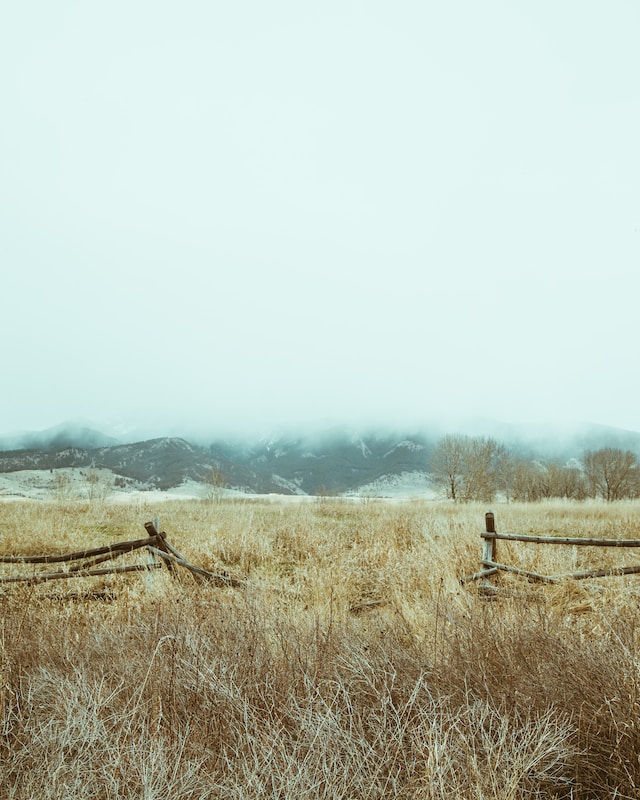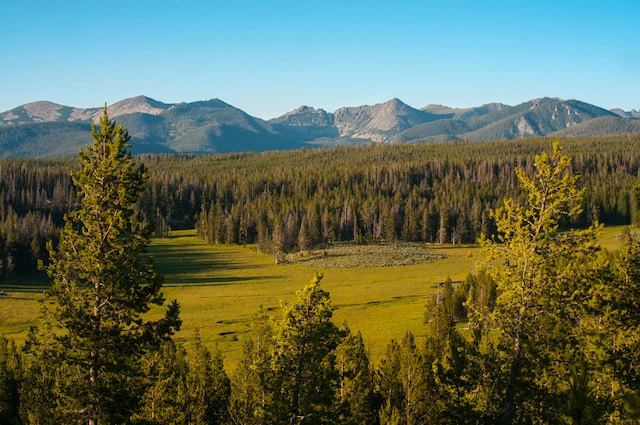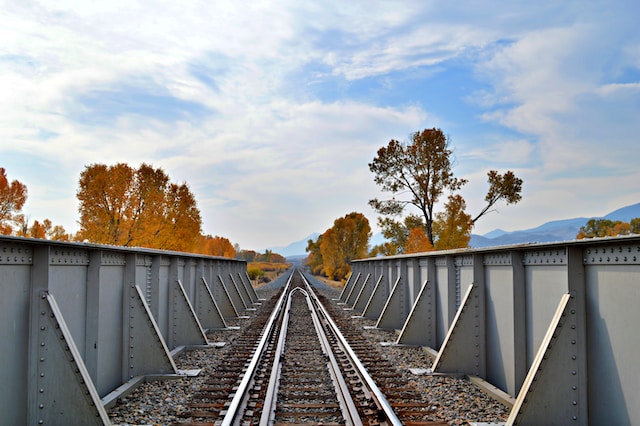Dillon’s small population, long history, and ideal location in beautiful southwest Montana make it a great place to live or retire. People who live in Dillon, Montana, enjoy a slow pace of life, a close community, and quick access to breathtaking nature.
If you’ve been asking yourself, “Is Dillon, Montana is a good place to live?”, then you may want to know more.
- Is it safe?
- Is it growing?
- What’s the atmosphere like?
- What do people do there?
- What are the demographics?
Below we answer each of these questions, plus more, to help you decide if Dillon, Montana, is a good place to live.
In this article:
- Is Dillon, Montana a good place to live?
- Is Dillon, Montana a good place to retire?
- Is Dillon, Montana safe?
- What are winters like in Dillon, Montana?
- What are summers like in Dillon, Montana?
- What is Dillon, Montana known for?
- What is the population of Dillon, Montana?
- What are Dillon, Montana’s demographics? (What kind of people live there?)
- What is the median property value in Dillon, Montana?
- What do people do in Dillon, Montana?
- What’s the atmosphere like in Dillon, Montana?
- What’s the cost of living in Dillon, Montana?
- Is Dillon, Montana growing?
- Where is Dillon, Montana located?
- What county is Dillon, Montana in?
Is Dillon, Montana a good place to live? What’s it like to live in Dillon, Montana?

Dillon, Montana is a good place to live for people who enjoy a small-town atmosphere, history, museums, quaint downtowns, and easy access to the outdoors.
Dillon, Montana sits in a wide valley in a unique location in southwest Montana. The town is surrounded by 11 beautiful mountain ranges and the picturesque rivers of the Beaverhead Valley. This area features scenic drives, hiking, camping, swimming, boating, and wildlife viewing opportunities.
Residents of Dillon, Montana enjoy a quiet, uncrowded, suburban environment. The town features a main street, offers peaceful nightlife, and has above-average public schools.
Is Dillon, Montana a good place to retire?

Dillon’s small population, rich history, and ideal location in beautiful southwest Montana
make it a great place to retire. People who retire in Dillon, Montana enjoy a slower pace of life, a safe community, and quick access to breathtaking natural points of interest.
Is Dillon, Montana, safe? What is the crime rate in Dillon Montana?
Dillon Montana is a relatively safe city for Montana. According to AreaVibes, who source their data from the FBI, the overall crime rate in Dillon, Montana is 77% lower than the national average.
Dillon, Montana’s violent crime and property crime rates are 22% and 88% lower than the national average, respectively.
In a poll conducted by Niche, Dillon residents answered questions about how safe they feel in their city:
“How safe do you feel in this area?”
- Pretty safe (60%). There is some crime, but it doesn’t impact me much.
- Very safe (40%). There is little crime to speak of.
“How reliable are the police in this area?”
- The police are visible and very responsive (60%).
- The police are visible but respond slowly (40%).
While these results are based only on five responses, it’s safe to say that Dillon, Montana is one of the safer cities in Montana.
Montana has a high crime rate, so many people are curious whether or not the state is safe, overall. In another article, I dug deeper into this issue and found the answer.
What are winters like in Dillon, Montana?

Dillon, Montana has typical, cold winters, lasting from late November to early March, similar to most other towns in southern Montana. During this time, the town and surrounding mountains and fields are covered in a blanket of snow.
Winter temperatures
According to Weather Spark, from November to March, average low temperatures in Dillon range from 13°F to 28°F (-10.5°C to -2°C).
Average highs range from 31°F to 50°F (-0.6°C to 10°C).
Winter temperatures rarely fall below -6°F (-21 °C) or exceed 35°F (1.6°C).
The coldest days are usually around the end of December when temperatures range from 13°F to 31°F (-10.5°C to -0.6°C).
How much snow does Dillon, Montana get?
Dillon, Montana usually receives snow from November to April, averaging 21 in (53.3 cm) of snow annually. The snowiest month is December when Dillon receives an average of 2.2 in (5.6 cm).
What are summers like in Dillon, Montana?

Dillon, Montana has short, dry, and warm summers, lasting from late May to late August. This is a time when residents start spending more time outside, in town, and exploring the surrounding mountains, valleys, and rivers of the Beaverhead Valley.
Visitors arrive in Dillon in the summer. However, it doesn’t get too crowded.
Summer temperatures
According to Weather Spark, from May to September, average low temperatures in Dillon range from 34°F to 52°F (1°C to 11°C).
Average highs range from 60°F to 83°F (16°C to 28°C).
Summer temperatures rarely fall below 34°F (1°C) or exceed 90°F (32°C).
The warmest days are usually around the end of July when temperatures range from 52°F to 83°F (11°C to 28°C). This is a great time of year for picnicking at the Clark Canyon Reservoir.
How much rain does Dillon, Montana get?
Dillon receives, on average, 11 in (28 cm) of rain annually. The skies are clear for most of the summer, with the most rain falling from April to June.
What is Dillon, Montana known for?

Dillon, Montana is well known for its history, museums, pleasant small-town atmosphere, and the abundance of outdoor recreation opportunities within the surrounding area.
Dillon, Montana is known for being a key transport hub of the Beaverhead Valley during the Montana mining boom in the 19th century. The town sits nearby the popular ghost towns of Bannack and Virginia City and is where Montana’s first railroad paused on its way to Butte in 1880.
Today, Dillon’s museums offer unique insight into the homesteading and mining history of Montana. Its unique location offers access to many outdoor activities, such as hiking the continental divide trail, bathing in nearby hot springs, and boating and picnicking on the shores of Clark Canyon Reservoir.
In another article, I explain how Dillon survived the end of Montana’s mining boom, unlike many surrounding towns: The last town after the gold rush – A brief history of Dillon, Montana.
What is the population of Dillon, Montana? How big is Dillon, Montana?
The population of Dillon, Montana is 3,880, according to the 2020 census.
The town covers an area of 1.90 mi2 (4.92 km2). Thanks to its small size, it is possible to easily explore the city on foot.
Dillon is less touristy than bigger cities in Montana. Residents enjoy its small-town atmosphere, without crowds, almost all year round.
Dillon, Montana’s demographics (What kind of people live there?)
Population
With 3,880 people, Dillon is the 31st largest city in Montana.
Median Income
In 2021, the median household income in Dillon was $39,488. This is lower than the statewide median of $60,560. About 12.8% of Dillon families live in poverty.
Median Age
The median age of Dillon residents is 30.8 years – 29.2 years old for males, and 34.1 years old for females. Dillon has a relatively young population.
What is the median property value in Dillon, Montana?
According to DataUSA.io, in 2020 the median property value in Dillon, Montana was $164,300. This was a 0.428% growth from the previous year.
What do people do for work and recreation in Dillon, Montana?
Work
The Dillon, MT economy employs 2.01k people. Dillon, Montana’s largest industries are:
- Accommodation & Food Services
- Health Care & Social Assistance
- Educational Services
Other common industries in Dillon, Montana include:
- Mining, Quarrying
- Oil & Gas Extraction
- Agriculture, Forestry
Recreation
The top recreational activities in Dillon, Montana include:
- Traveling to nearby ghost towns and hot springs
- Skiing and snowboarding at nearby Maverick Mountain
- Spending time in the nearby natural areas, such as Clark’s Lookout, Clark Canyon Reservoir, Red Rock Lakes Wilderness Area, and the Pioneer Mountains Scenic Byway
- Exploring sites along the Lewis and Clark Trail
There’s a lot to do in and around Dillon. It can be hard to choose how to spend a Saturday afternoon. In this article, I outline the best things to do in Dillon, Montana.
What’s the atmosphere like?
Dillon, Montana offers its residents a sparsely populated, suburban feel with a welcoming, youthful population and a calm, but lively atmosphere. Many of the residents are young professionals, and much of the population tends to be conservative.
What’s the cost of living in Dillon, Montana?
The cost of living in Dillon, Montana is about 12% lower than the national average.
According to BestPlaces’s cost of living index, Dillon’s cost of living is 87.9 (with the national average cost of living at 100).
| COST OF LIVING | Dillon | Montana | USA |
| Overall | 87.9 | 100 | 100 |
| Grocery | 100.8 | 99.6 | 100 |
| Health | 100.3 | 99.6 | 100 |
| Housing | 90.1 | 121.3 | 100 |
| Median Home Cost | $327,000 | $441,800 | $338,100 |
| Utilities | 84.6 | 90.7 | 100 |
| Transportation | 64.8 | 75.2 | 100 |
| Miscellaneous | 92.6 | 90 | 100 |
Is Dillon, Montana growing?
Since 1970, Dillon, Montana’s population has been on a slight decline. The town’s population fell 6.1% from the 2010 census to the 2020 census – from 4,134 to 3,880, respectively.
This decline has been a steady trend for Dillon since 1970. However, from 1900 to 1970, Dillon, Montana’s population grew steadily – from 1,530 to 4,548.
Where is Dillon, Montana located?
Find Dillon, Montana on the map below.
Dillon, Montana is located in Beaverhead County in southwest Montana, halfway between Butte and the Idaho border off I-15.
What county is Dillon, Montana in?
Dillon is the county seat of Beaverhead County, located in southwestern Montana.
Nearby points of interest in Beaverhead County include Coolidge Ghost Town, Pioneer Mountains, Pioneer Mountains Scenic Byway, Maverick Mountain Ski Area, and Elkhorn Hot Springs.
Not ready to move to Dillon? Consider visiting
If you’re not sure about moving here yet, why not visit?
Dillon, Montana is well worth a visit for anyone interested in seeing where a dynamic chapter in Montana history unfolded in a splendid corner of the state.
If you’re interested in other cities in Montana, my article on the best places to live in Montana explains which cities in Montana are the best, and why.

